By Shahid Abrar-ul-Hassan
This article first appeared in TESOL Journal, Volume 2, Number 4, pgs. 510–520. Members can access all issues for free here. To become a member of TESOL, please click here. © TESOL International Association.
|
Abstract
Studies on the human language system have brought to the fore two key aspects. First, the prime function of language is communication. Second, language exists in the social world. The language learning process takes place within the sociocultural context and the relevant macrostructures that influence language use and development. According to the emergentist perspective, during the language learning process communication plays the central role in the emergence of a language system in a learner. Thus, the grammatical structures emerge through discourse as a result of the interaction between the learner and the environment. This article explicates, from the emergentist perspective, the vital role of communication, particularly authentic communication, in the emergence of linguistic structures. It also sums up the pedagogical implications of this understanding. |
Language is a familiar phenomenon to all of us and an integral part of our lives. We communicate and even think through a language. Thus, language is the vehicle of communication in the social world (MacWhinney, 1999). Furthermore, language links us to each other in human society. This down-to-earth proposition involves two key aspects of the phenomenon of language. First, communication is the fundamental function of language. We employ language for a number of interpersonal as well as intrapersonal communication needs in our lives. Second, language exists in the social world (a social tool, as Atkinson, 2002, calls it) in which it fulfills communicative functions.
In linguistic studies, capturing the intricacies of language is quite a daunting task, because no one theory or perspective can offer a comprehensive or illuminating view of language (van Lier, 2004). This perplexity remains a perennial concern of language practitioners. Also, it is important to note that language learning capability is exclusive to humankind (Jackendoff, 2003; Pinker, 1994), and human beings are capable of learning languages other than their native or mother tongue. This language learning process takes place within the sociocultural context and the relevant macrostructures that influence language use and development. During the learning process, communication plays the central role in the emergence of a language system in a learner, and grammatical structures emerge out of discourse as a result of the interaction between the learner and the environment. This article, while building on the emergentist perspective of language learning, examines the emergence of language during the learning process and the implications of emergentism for English to speakers of other languages (ESOL) instruction. Thus, the article offers a blueprint for language learning by illustrating the theory with some exemplars. The discussion is limited to the development of syntactic structures during the language learning process, which is also an area of focus within linguistic emergentism.
Emergentist View of Language Learning
As mentioned earlier, language is a social entity employed for a variety of interpersonal communication needs. Therefore, second language learning (SLL) is motivated by communicative needs and functions. Communication is the prime objective of any language system, and that learners should be introduced to language through discourse. This belief is based on my realization that communication (and environment) plays a pivotal role in the emergence of a language system in an individual, and language rules are shaped and reshaped by communication events. To capture the emergence of a language (in a learner), emergentism provides a valid account of language structure and its evolution during the language acquisition process. It is pertinent to mention, however, that emergentism shares a great deal with several approaches in SLL literature, such as complex systems theory, cognitive linguistics, and usage-based theories (see, e.g., Larsen-Freeman, 1997; Robinson & Ellis, 2008; Tomasello, 2003).
This article first appeared in TESOL Journal, 2, 510–520, in the 21st-Century Language Skills section. For permission to use this article, please go to http://www.copyright.com/.
doi: 10.5054/tj.2011.269749
TC Monthly Giveaway Congratulations to Kyle Butler of Ohio, USA, for being the winner of the December 2011 TESOL Connections Monthly Giveaway. Out of more than 1,300 entrants, Kyle won a free TESOL gift membership to share with a friend or colleague.
This month, enter to win a free
TESOL Quarterly
subscription or renewal!
|
 TESOL Quarterly is a refereed professional journal that fosters inquiry into English language teaching and learning by providing a forum for TESOL professionals to share their research findings and explore ideas and relationships in the field. The Quarterly's readership includes ESOL teacher educators, teacher learners, researchers, applied linguists, and ESOL teachers. TESOL Quarterly is a refereed professional journal that fosters inquiry into English language teaching and learning by providing a forum for TESOL professionals to share their research findings and explore ideas and relationships in the field. The Quarterly's readership includes ESOL teacher educators, teacher learners, researchers, applied linguists, and ESOL teachers.
|
Click here to enter
TESOL Blogs Check out the latest TESOL Blogs:
|
3 Basic Tech Tools for Beginning Online Teachers, by Sandra Rogers
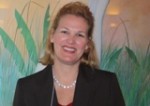 Ever feel overwhelmed by all the Web 2.0 learning tools available? I’m crazy about technology; however, a PowerPoint presentation that covers 40 or 50 tools is just too much for my brain to assimilate. This blog focuses on the 3 most basic tech tools that I use for online instructional design. Plus, they’re free! I have 7 more to share in a follow-up blog. Read more. Ever feel overwhelmed by all the Web 2.0 learning tools available? I’m crazy about technology; however, a PowerPoint presentation that covers 40 or 50 tools is just too much for my brain to assimilate. This blog focuses on the 3 most basic tech tools that I use for online instructional design. Plus, they’re free! I have 7 more to share in a follow-up blog. Read more.
|
|
Figuring out the frequency of two word verbs, by Joe McVeigh
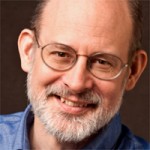 The December 2011 TESOL Quarterly contains a wonderful study by Dilin Liu analyzing the frequency of phrasal verbs across several corpora. This is a really useful article for teachers and materials writers, with lots of great information in it and a valuable companion to his 2003 corpus study on the most common spoken American English idioms. The December 2011 TESOL Quarterly contains a wonderful study by Dilin Liu analyzing the frequency of phrasal verbs across several corpora. This is a really useful article for teachers and materials writers, with lots of great information in it and a valuable companion to his 2003 corpus study on the most common spoken American English idioms.
Some of the findings are fairly predictable and confirm what we already think we know about phrasal verbs (sometimes known as two-word verbs.) You won’t be surprised to learn that some of the most frequently used phrasal verbs are go on, pick up, come back, go back, and find out.
But, as a teacher who lives in the United States, but has also spent time in the United Kingdom, I was fascinated by the differences found in the frequency of some verbs that are common in American English, but not in British English and vice versa. Read more. | TESOL Bookstore
It’s a new year, and teachers are looking for fresh ideas in professional development. These books from TESOL Publications are written by TESOL professionals who share their insights and perspectives with the field.
|
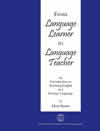 |
From Language Learner to Language Teacher
Today, there are about four nonnative-speaking English teachers for every teacher who is a native speaker. This volume focuses on the challenges faced by English teachers for whom English is a second (or even third or fourth) language. Four themes receive special emphasis: communicative language teaching, proficiency, language learning, and practicality. |
|
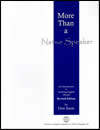 |
More Than a Native Speaker
This book offers a nontechnical introduction to English teaching for native-English-speaking teachers working outside their home countries. Readers benefit from discussion of student-directed learning, workbook activities, and a full array of culture-based discussion topics. |
|
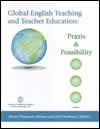
|
Global English Teaching and Teacher Education: Praxis & Possibility
Contributions from Asia, Europe, and Africa display a variety of historical and theoretical perspectives on the roles and status of differing Englishes across societies. Chapters are grouped into three main sections: Resistance to Inner-Circle and Local Standards of English, Changing Attitudes Toward English, and Situated English Language Teaching Pedagogy. Students enrolled in teaching ESOL programs around the world will find this book useful, as will teacher educators and teachers seeking professional development. |
|
 |
|
|
 |
 |
To have your "transition" or recognition published, send an e-mail to tc@tesol.org with your name, your current status, and your new status. |
 |
 |
|
 |
| ADVERTISEMENT |
 |
|